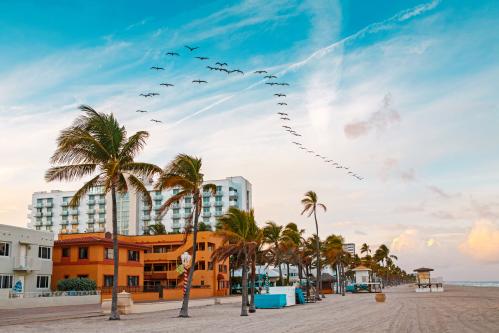This analysis is part of the American Rescue Plan: Strategies for Local Leaders series, a feature of the COVID-19 Metro Recovery Watch.
Last month, Brookings Metro detailed the American Rescue Plan’s (ARP) appropriation of $350 billion in extremely flexible state, local, and tribal COVID-19 recovery funds. This unprecedented amount ensures that many of these governments will have abundant resources to deploy for addressing their biggest problems.
Given those resources, now is the time for states, localities, and tribes to think big and act creatively on some of their hardest issues, whether it be closing opportunity gaps in job creation; supporting minority-owned businesses in underserved communities; advancing digital equity; empowering local real estate ownership in disadvantaged neighborhoods; expanding Medicaid; or boosting regional growth.
Among such projects, a major new initiative in Indiana offers a compelling—and transferable—example of how to leverage ARP funds to make a big move on a tough issue.
Indiana—like dozens of states—has struggled for years with both a serious job quality challenge and a deepening regional growth problem, characterized by uneven growth across the state’s communities (see Figure 1).
As discussed in a recent Brookings Metro report, Indiana needs to revitalize its drifting statewide advanced-industries sector and ensure that communities around the state participate in that revitalization. At present, smaller communities are too often not participating fully; instead, many of the state’s regions—often anchored by manufacturing-intensive cities such as Gary, South Bend, Fort Wayne, and Terre Haute—have seen their slow or negative growth fall even more during the pandemic.

So, what is Indiana’s highly transferable response?
In brief, state lawmakers are leveraging a major portion of the state’s ARP funding to tackle regional inclusion at a truly meaningful scale through a $500 million grant program supporting 10 regions across the state.
This new program is informed by various Indiana precedents, beginning with the Lilly Endowment’s Strategic Community Advancement Initiatives, which have operated since 2007, and the state’s 2015 Regional Cities Initiative. These initiatives converged with the ideas in Brookings’s report and in Gov. Eric Holcomb’s State of the State address this January, when he proposed a Next Level Regional Recovery program aimed at helping Indiana regions “develop strategies designed to improve quality of place, advance industry sector development, and grow workforce development initiatives.”
Initially, the Next Level grant program was funded at $150 million. By the time the budget deal was finalized in mid-April, the program had been renamed the Regional Economic Acceleration and Development Initiative (READI), and its budget boosted to $500 million—all of it funded by ARP.
Now, the Indiana Economic Development Corporation (IEDC) is awarding up to $50 million per region to 10 regions across the state. These grants will support the implementation of strategies focused on enhancing regions’ innovation ecosystems, entrepreneurship supports, talent attraction and development, and quality of life.
The program is being kept quite simple, in a way that should enable relatively easy adoption by other states. Counties, cities, and towns can apply for $50,000 planning grants for their regions by midsummer. By the fall, each region must convene its stakeholders to develop a strategic development plan articulating a vision and plan for investment. And by year’s end, funding decisions will be finalized.
To be sure, greater specificity about preferred uses of the program’s dollars might have been helpful to some regions (although others will likely appreciate the flexibility). With that said, the program guidance is admirably clear that it will fund not just physical assets, but also nonphysical initiatives such as talent development programs, public-private partnerships, workforce efforts, innovation voucher projects, and small business supports.
Other states might make adjustments or add their own enhancements should they follow a similar strategy of large-scale grants to support regional revitalization. READI’s rapid planning period and required 4:1 funding match (including a required 1:1 match from local government funding and a recommended 3:1 match from private and philanthropic sources) could prove challenging for some regions, especially smaller and more distressed areas most in need of community revitalization aid.
How states interpret the newly released Treasury Department guidance on the use of ARP funds will have important implications too, such as determining which industries and communities have faced negative economic impacts due to the COVID-19 pandemic, as well as deciding whether relief funds can be used as match money. States will also need to design program milestones and funding matches that make sense for their communities. Likewise, state support for shared learning and peer exchange could help communities identify promising practices and improve implementation.
For all that, though, Indiana’s READI program impressively takes advantage of the opportunity the American Rescue Plan has given to states and cities. By applying the flexible federal largesse into a strong vision, Indiana has gone big on one of the toughest challenges states face—and raised hopes for the next decade.









Commentary
Indiana’s plan to use COVID-19 relief to uplift its struggling regions
May 11, 2021